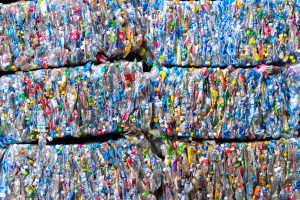WS2 Data modelling and uncertainty
Background: We need a transparent account of the whole life-cycle emissions and environmental impacts associated with plastics and petrochemicals. As emissions (and mitigation options) occur across the life-cycle, modelling must integrate data from upstream refinement, through manufacturing and use, to end-of-life treatment/recycling. Providing this data in a transparent and accessible way enables broader use by a range of researchers, activists and leaders in policy and industry. There is high uncertainty about some aspects of this system, but due to the limited data availability this is often not quantified statistically.8 Some data gaps and uncertainties are more important than others, depending on the question at hand. Properly capturing uncertainties allows decision making to proceed, even with imperfect data, and a better understanding of the effect of uncertainty on decisions.
Proposal: We will develop an open and comprehensive integrating model of global resource flows, emissions and technologies in the petrochemicals sector. This will combine information, data and learnings from the other workstreams (WS3–5) in an open repository, creating transparency and a process for accepting contributions to update or improve the dataset. We will include uncertainty explicitly using an iterative Bayesian framework (developed by Lupton) allowing characterization of potentially large uncertainties in areas where data is scarce. By allowing large uncertainties in some parts of the model, initial data gaps need not hold up the overall process. Initial estimates can be made conservatively, with high uncertainty, allowing the model to prioritize areas where further data is most needed to better inform the relevant decisions and insights.
Methodology: We will develop a systems model structure capturing material and energy flows, stocks in use, emissions and environmental impacts. As different workstreams use different types of models, appropriate to different parts of the life-cycle, the integrative model will abstract a common structure. The mathematical structure combines the flow and emissions modelling of Life Cycle Analysis with the dynamic stock modelling of Material Flow Analysis. The workstream will:
– Establish an integration process to bring results from each workstream to calibrate the integrative model structure, and feedback to other workstreams on data improvement priorities and potential inconsistencies.
– Output results from the model in a consistent format (i.e. dynamic Sankey diagrams of mass, energy and emission, using the FloWeaver tool developed by Lupton) for further analysis and data visualization, acting as a toolkit for others to extract relevant evidence from the model.
– Assess and characterize data uncertainties and propagate these through the model using Monte Carlo simulations in a Bayesian framework, as previously developed by Lupton (Co-I) for material and energy flows.
– Present uncertain results in the context of particular decisions or questions and use sensitivity analysis to explore the areas of the model most in need of improved characterization of uncertainty or improved data quality, driving an iterative improvement cycle.
Deliverables: The workstream delivers an online portal allowing access to the model, tools and data, along with guidance notes. The modelling framework and uncertainty approach will be written up in two journal papers.





